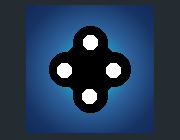AAV multi-wavelength analysis with UltraScan
Presenters: Amy Henrickson, University of
Lethbridge, Canada, and Borries Demeler, University of
Lethbridge, Canada.
DescriptionGene therapies deliver genetic material to host cells to silence or repress a mutated gene, replace it with a healthy gene, or introduce a new gene to help fight diseases. Multiple approaches, drug delivery vectors, and potential drug targets make this field versatile and successful. One of the most widely used vectors is adeno-associated viruses (AAVs), as they are not known to be pathogenic and result in a low immune response. AAV formulations consist of both loaded (containing genetic material) and empty (lacking genetic material) vectors, in varying ratios. Their production can contain contaminants such as partially loaded or aggregated vectors or unpackaged nucleic acids. This rapidly evolving field requires continuous development to improve the safety and efficiency of treatments, which requires objective characterization methods capable of identifying all components present in a formulation. Analytical ultracentrifuge (AUC) offers exciting innovations that can revolutionize studies focusing on the molecular basis of diseases and their cures. Recent advances in AUC hardware and software have allowed for the development of two new methods that can overcome these quality control issues. The first is sedimentation velocity (SV) multi-wavelength AUC (MW-AUC) which allows for the accurate separation of spectrally different macromolecules (proteins, lipids, and nucleic acids), resulting in reliable identification of loaded vs. partial or empty AAVs and other contaminants, providing significantly improved quality control of gene therapies. The second is analytical buoyant density equilibrium (ABDE). This method is analogous to the techniques used during AAV purification, where density gradient forming solvents separate loaded AAVs, empty AAVs, and contaminants based on their densities and results in baseline separated peaks for each analyte (Figure 2). Combining ABDE with MW-AUC results in the accurate identification of each solute peak. Furthermore, ABDE experiments significantly improve throughput and sensitivity, significantly reducing the amount of sample volume and concentration compared to SV MW-AUC. These methods are innovative biophysical approaches that can be used to characterize many macromolecular assemblies in their physiological solution environment. They are universally applicable to other vector systems and other viral therapeutics, as well as including lipid nanoparticles, bacteriophage formulations, and other gene therapy systems. In this workshop, we will discuss experimental design, and the tools implemented in UltraScan to process AAV samples with multi-wavelength SV and ABDE experiments, and demonstrate the superior resolution, improved throughput, and reduced sample requirements. This workshop will be presented on Monday from 9:00-11:00 (session 5).

